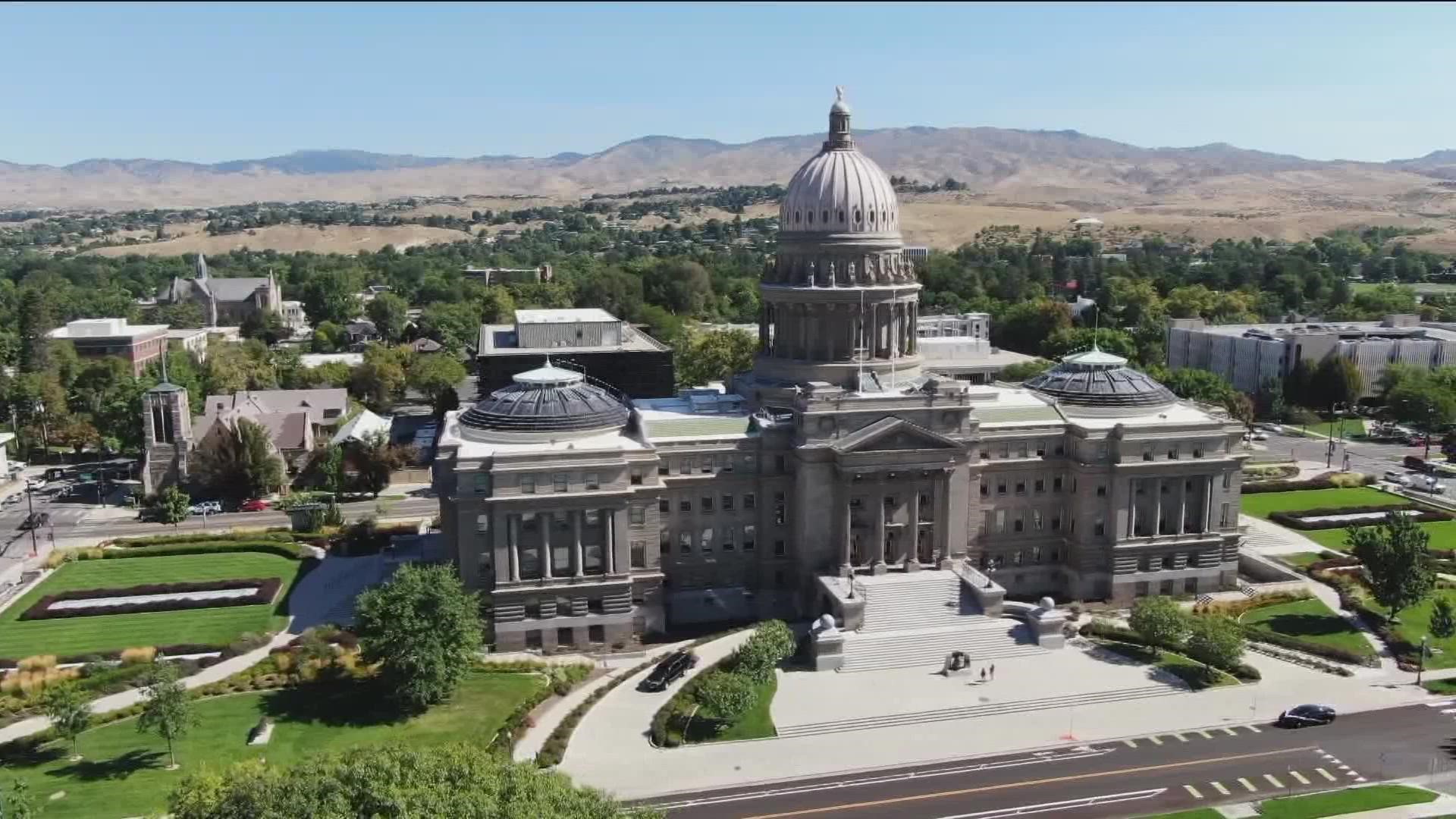BOISE, Idaho —
This story originally appeared in the Idaho Press.
Lucky Peak Nursery Manager Sara Wilson opened the greenhouse door, revealing rows of fluffy-looking, bottlebrush-shaped baby conifer trees.
The nursery, located east of Highway 21, was built in 1959 to grow plants for the U.S. Forest Service to restore landscapes affected by wildfires or other events, such as insect or weather damage, Wilson said. It is one of six such nurseries, and the site also hosts a seed “extractory” for cleaning seeds, one of just two standalone operations in the nation, she said.
The nursery’s trees travel to forest service land and other federal and local government partners in a wide swath of the west: southern Idaho, Nevada, Arizona, New Mexico, Utah, western Wyoming, and parts of California and Colorado, she said.
That means producing 3-4 million seedlings per year, Wilson said.
“We are able to receive all of the seed from national forests, clean it, store it, and then have it available for their needs,” she said.
THE NEED FOR REFORESTATION
Wilson estimates that about 80% of the trees grown in the nursery are for restoration projects after wildfire, while about 20% of seedlings help restore sites that lost trees for other reasons.
The idea behind restoration is that it can help an area return to similar conditions faster than if the process were left to nature, Wilson said. Generally, staff in an area will monitor a burn site over subsequent years to assess if it is recovering on its own, or if it could benefit from nursery plantings.
“These are areas where (reforestation) would not happen for hundreds of years on its own,” Wilson said.
For example, a fire might burn so intensely that it “completely destroys” any seeds in the soil that might have grown and helped restore the site, she said. And if fire burns a wide enough area, a tree that could provide new seeds might be too far away to blow in quickly, she said.
Tree die-offs from insect damage may also merit restoration efforts, Wilson said. Nearly four years ago, many trees died around the Sage Hen Reservoir following a tussock moth outbreak, she said. The moths are natural, cyclical insects that feed on the needles of Douglas fir trees. Officials that manage that site are developing a restoration plan to remove dead trees and plant new ones grown at the nursery.
COLLECTION, EXTRACTION, STORAGE, AND GROWTH
The nursery regularly receives seeds for processing from parts of the country where future seedlings might be needed, Wilson said. Workers have to collect cones before they open so seeds are not lost to the environment. One tree, the whitebark pine, grows at high elevations and has evolved to have its cones pried open by a bird, the Clark’s nutcracker, she said. For those trees, workers place cages around the cones so that the birds cannot access the cones ahead of being collected by humans, she said.
When cones arrive at the facility, they undergo the multistep seed extraction process, where they are allowed to open before being heated on a “cone kiln,” and tossed into a “cone tumbler” to separate the seed from the other cone material. Eventually, they get sorted in the “plinko” as Wilson affectionately refers to it — a Shop-Vac-powered apparatus that blows seed material, separating the lighter ones that succumbed to insect damage from the heavy, healthy ones.
Once clean, the seeds go into the nursery’s walk-in freezer until they are needed. Wilson estimates the freezer houses about 300 million conifer tree seeds.
The nursery only grows the seedlings if an order is placed, Wilson said. Customers will want trees grown from seed collected in roughly the same area that is slated for restoration, or seeds gathered in an area that has similar conditions to the restoration site, such as elevation, and temperature range, Wilson said.
Nursery staff can locate the appropriate seed in the freezer, and start the growing process.
But frozen seeds will not spring to life if planted immediately, Wilson said. They need to undergo a process called “stratification,” or the mimicking of seasonal conditions they would face in the wild, she said. Typically, they are allowed to thaw, followed by watering to mimic fall rain, and several months of refrigeration to mimic winter, Wilson said. Then planting in the nursery’s greenhouse can begin.
In the greenhouse on Monday morning, less-than-1-foot-tall ponderosa pine seedlings destined for Arizona took up the front rows of tables filling the structure nearly from wall to wall. Those seedlings were planted in February so they could be ready in time for planting during that region’s summer monsoon season, when it gets the most rain, Wilson said. The greenhouse was kept at 70 degrees early during planting, she said, and can be divided into four sections to mimic growing conditions of the areas they will be planted in.
THE FUTURE OF RESTORATION
Studies have shown that climate change is fueling more frequent, hotter fires, as well as fires that cover larger areas, according to the Environmental Protection Agency. The approach to restoration at the nursery reflects that reality, and climate change is “at the forefront” of how the Forest Service is thinking about its role in restoration, Wilson said.
The idea behind planting “the right seed at the right time at the right place” is promoting “resiliency into the future,” she said.
This story originally appeared in the Idaho Press. Read more at IdahoPress.com
Watch more on wildfires in the West:
See all of our latest coverage in our YouTube playlist:



